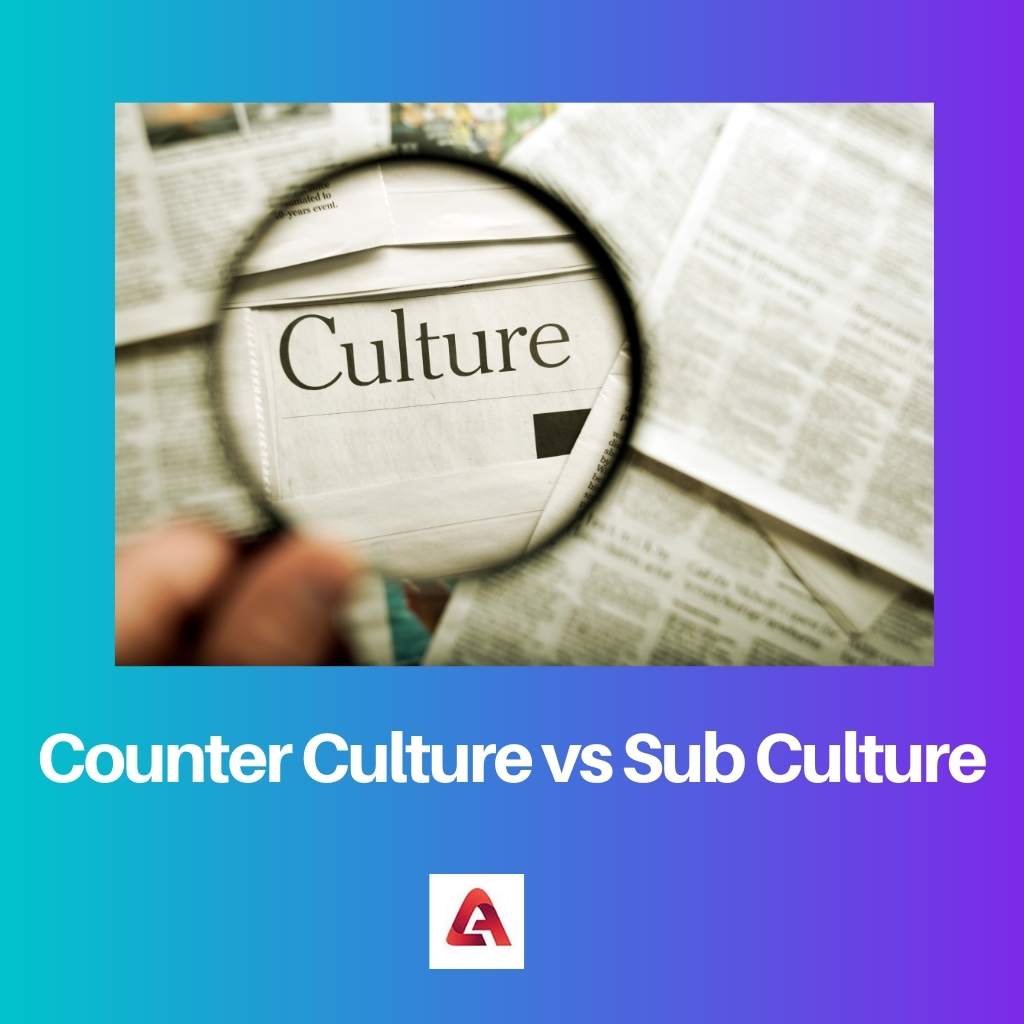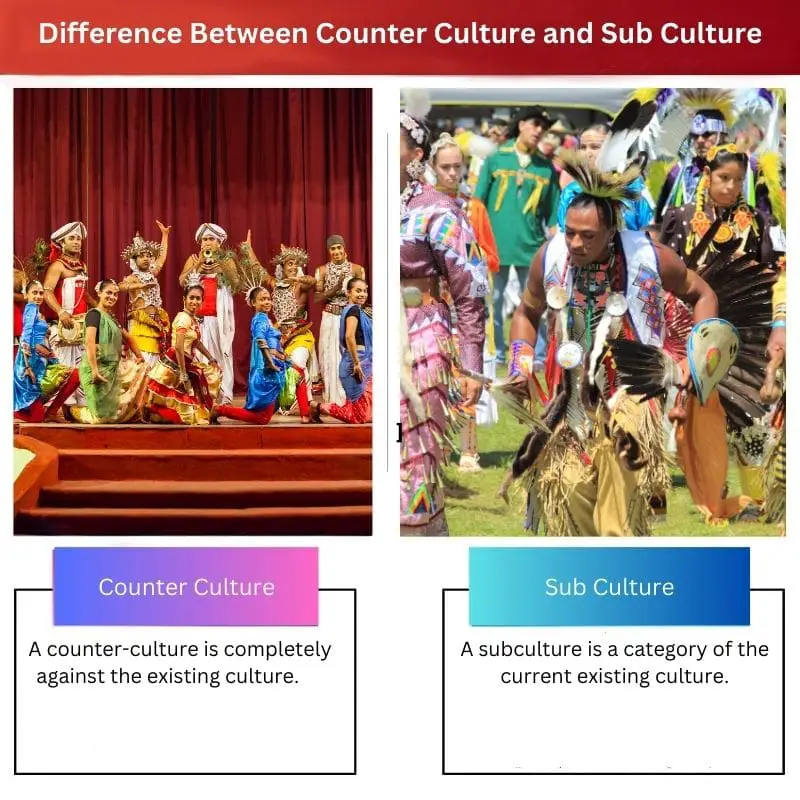Culture, in general, is the characteristics of a particular group that follows a specific region, speaks a particular language, and follows different customs.
Apart from this, culture also has its own type of music, dance, art, and food. Obviously, with billions of people living in this wild, there are a lot of cultures.
Key Takeaways
- Counterculture is a group that opposes the dominant culture, while subculture refers to a smaller group that shares common values and beliefs within a larger culture.
- Counterculture is more likely to engage in radical activities to challenge mainstream society, while subculture has more moderate behavior.
- Counterculture tends to form in response to a specific issue or event, while subculture can form based on a shared interest or lifestyle.
Counter Culture vs Sub Culture
The difference between a counterculture and a subculture is that a counterculture is about the culture in which they are against the prevalent culture or oppose their beliefs, whereas a subculture is one where it coexists with the prevalent culture but has certain variations in their customs. In general, sub stands for under, and counter stands for against.

A counterculture ferociously and relentlessly opposes the existing culture to bring its own ideas, customs, and beliefs. They aim at eradicating that culture and making a change in society and changing the existing culture.
They oppose the existing culture since they hope it affects their own beliefs. They actively oppose the culture that is in the majority.
A subculture has its own beliefs and customs that are not against the prevalent culture. They didn’t have contrasting beliefs. It goes hand in hand.
Though they have differences in beliefs and thoughts, they do not oppose the prevalent culture, and it does not affect those beliefs. Though they follow the prevalent culture’s beliefs, they have their own thoughts.
Comparison Table
| Parameters of Comparison | Counter Culture | Sub Culture |
|---|---|---|
| Definition | A counter-culture is completely against the existing culture. | A subculture is a category of the current existing culture. |
| Size | A counter-culture is an opponent and hence large in size. | A subculture is a group of people within the existing culture, and it is smaller in size. |
| For/Against | The counter-culture is complete against the counter-culture. | The subculture does not have extremely contradictory opinions as with the existing culture. |
| Components | A counter-culture has thoughts, ideas, and beliefs that are completely different from that of the mainstream culture. | Though subcultures have their own customs and practices, they share some similarities with the prevalent culture. |
| Impact | Counter culture causes huge changes and reformation. | Subcultures peacefully coexist and are united through their common interests and ideologies. |
What is Counter Culture?
Counterculture holds values, ideas, and customs completely different and contradictory to the main existing culture. When a large group of like-minded people opposes an equally large culture that is prevalent in society, they are called a counterculture.
Some common subcultures that existed were Illuminati, levellers, bohemianism, feminism, and much more.
One common historical example is the hippies, the largest group of people and consisted of middle-class white people. A popular example from history is the emergence of a counterculture in the united states during the Vietnam War.
This group comprised of groups who were indignant and opposed the elder’s views on racial discrimination, women’s rights, and much more.
This movement divided the country and brought about a lot of reforms and changes in society. In the early 1970s, several factors curbed and eradicated the movement. This forced a lot of people to move into mainstream cultures.
Some of their mottos were sexual freedom, liberty, music, drugs, and much more. The counterculture group also showed their burgeoning interest in the field of astrology and yoga.

What is Sub Culture?
Though subcultures have customs and practices that allow them to stand unique and also be easily identified, they are not against the existing culture. It is followed and practised by a minority of people within the broad category of the culture.
They have common customs, art styles, music, and also customs.
Though they might have different features that do not oppose that of the existing culture, they peacefully coexist with one another. They are subcategories that fall under the main culture but are classified due to their slight differences in the type of music or clothing they wear.
Subcultures are crucial since it collects people with the same ideas and those who feel rejected and feel like they do not belong anywhere this is the right place for them to follow their ideas and thoughts.
There are a few cases where a subculture might also oppose the existing culture. Geographical factors, along with sexuality, age, and gender, are some major factors that result in the birth of subcultures.
This might be a more comfortable platform for them and prevents people from feeling thrown out and lonely. This is a great option for individuals who are in need of support and encouragement towards their beliefs.

Main Differences Between Counter Culture and Sub Culture
- Countercultures are completely against the existing culture, whereas the subcultures go hand in hand.
- Countercultures have a large population when compared with subcultures.
- Counterculture is against the thought of the existing culture, whereas subcultures are for ideas and practices.
- Counterculture follows customs and practices that are completely different from the existing culture, whereas subcultures share similar interests with the mainstream culture in addition to their unique traditions and beliefs.
- Countercultures are powerful enough to make changes and reformations and also to remove the existing culture, whereas subcultures do not make such changes and coexist with the existing culture.





